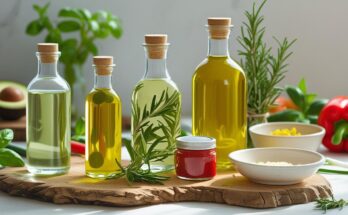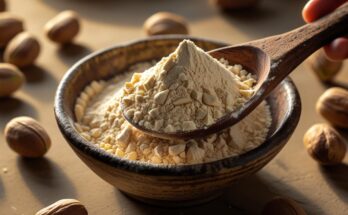AIP sweeteners can be confusing when you’re just starting the Autoimmune Protocol. Managing cravings while avoiding refined sugars and gut-disruptive ingredients may feel overwhelming — but the good news is, there are a few AIP-approved options to safely satisfy your sweet tooth. In this article, you’ll learn which sweeteners are allowed on AIP, which to avoid, and how to naturally add sweetness to your meals without triggering inflammation.,
In this guide, you’ll learn exactly what sweeteners are AIP-approved, which ones are strictly off-limits, and how to use them in your recipes safely.
Why Regular Sweeteners Are Off the Table on AIP
The AIP diet removes common inflammatory foods to help reset the immune system. This includes refined sugars, artificial sweeteners, and even natural sweeteners that are high in fructose or may irritate the gut.
Many sweeteners can:
- Spike blood sugar
- Feed harmful gut bacteria
- Cause inflammation
- Trigger autoimmune flare-ups
That’s why choosing gentle, low-fructose options is key.
Best AIP Sweeteners You Can Use During Elimination
Here are the only sweeteners allowed during the AIP elimination phase:
Ripe Fruit (Fresh or Dried)
Whole fruits are the safest way to satisfy a sweet craving.
- Best options: Bananas, apples, mango, dates, figs
- Use in: Smoothies, baked treats, homemade sauces
Fruit Purées
Purées like apple sauce or mashed banana work beautifully in recipes.
- Acts as both a sweetener and a binder
- No added sugar needed
Try them in AIP pancakes, muffins, or cookies.
Coconut Products
Coconut offers a mild sweetness and is AIP-compliant when unsweetened.
- Coconut butter
- Coconut flakes
- Coconut milk
Avoid coconut sugar — it’s not AIP-approved.
Carob
Carob is a naturally sweet, caffeine-free alternative to chocolate.
- Great in: Treats, smoothies, or as a topping
- Adds a mild, naturally sweet flavor
Pair with mashed banana for a chocolatey dessert vibe — without the cocoa.
Sweeteners to Avoid on AIP
Many sweeteners, even “natural” ones, are not allowed. These include:
❌ Honey and Maple Syrup
Although natural, these are high in sugar and not part of the elimination phase.
🕒 Can be reintroduced in later stages.
❌ Coconut Sugar
Processed from coconut palm sap — not permitted.
❌ Stevia
Even “pure” stevia leaf is not allowed due to its potential effect on gut health.
❌ Monk Fruit and Erythritol
These are sugar alcohols or processed extracts — not AIP-compliant.
❌ Agave Syrup
Extremely high in fructose, and often highly processed.
How to Sweeten Your AIP Recipes Naturally
Here are a few ways to safely sweeten your AIP recipes:
| Method | Ingredients | Example Use |
| Fruit purée | Banana, apple sauce | AIP cookies, pancakes |
| Dried fruit | Dates, raisins | Energy balls, snack bars |
| Whole fruit | Fresh berries, apples | Toppings, desserts |
| Carob | Carob powder or chips | Smoothies, brownies |
Try them in AIP pancakes, muffins, or cookies — just be sure to use flours like those listed in our AIP-Approved Flours guide.
When Can You Reintroduce Sweeteners?
Once you’re done with the strict elimination phase and your symptoms are under control, you can consider reintroducing sweeteners like:
- Honey
- Maple syrup
- Coconut sugar
📌 Reintroduce one at a time, in small amounts, and track your body’s response using a symptom tracker. Our AIP Reintroduction Phase Guide explains how.
Tips for Managing Sugar Cravings on AIP
Cravings are normal — here’s how to deal with them AIP-style:
- Eat balanced meals with healthy fats and protein
- Stay hydrated — thirst is often confused with hunger
- Try cinnamon, vanilla, or carob for natural flavor
- Distract yourself with a walk or an activity
- Have a go-to sweet AIP treat like baked apple with cinnamon
Final Thoughts
The AIP diet isn’t about depriving yourself — it’s about healing your body. By learning which sweeteners are safe, you can still enjoy naturally sweet foods without sabotaging your progress.
Stick with whole food sources like ripe fruits and carob during elimination, and explore new options as your body begins to heal.




